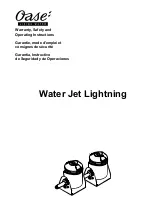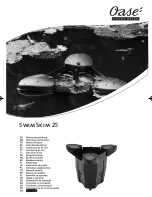
English
38
WILO SE 07/2013
9.7.1
Screw tightening torques
Wilo-CronoNorm-NL
When tightening the screws, use the following tightening torques.
• A (pump):
Tab. 10: CronoNorm-NL - Screw tightening torque A (pump)
• B (coupling):
see Tab. 6 in section 7.5.2 “Check the coupling alignment” on
page 19.
• C (baseplate):
see Tab. 7 in section 7.5.3 “Alignment of the pump unit” on page 20.
9.7.2
Screw tightening torques
Wilo-CronoNorm-NLG
When tightening the screws, use the following tightening torques.
• A (pump):
Tab. 11: CronoNorm-NLG - Screw tightening torque A (pump)
• B (coupling):
see Tab. 6 in section 7.5.2 “Check the coupling alignment” on
page 19.
• C (baseplate):
see Tab. 7 in section 7.5.3 “Alignment of the pump unit” on page 20.
10
Faults, causes and remedies
Have faults remedied by qualified personnel only! Observe the
safety instructions in chapter 9 “Maintenance/repair” on page 26.
• If the malfunction cannot be rectified, consult a specialist techni-
cian or the nearest customer service or representative office.
10.1
Faults
The following error types can occur (see Tab. 12):
Tab. 12: Error types
Thread: M8
M10 M12 M16 M20 M24 M30 M36
Tightening
torque [Nm]
12
25
40
90
175
300
500
700
Thread:
M6
M8
M10
M12
M16
M20
M24
M27
M30
M33
M36
M39
Tightening torque
[Nm]
10.5
26
51
89
215
420
725
1070
1450
1970
2530
3290
Error type
Explanation
1
Delivery rate too low
2
Motor overloaded
3
Pump end pressure too high
4
Bearing temperature too high
5
Leakage on the pump housing
6
Shaft seal leakage
7
Pump doesn't run smoothly or is loud
8
Pump temperature too high
















































